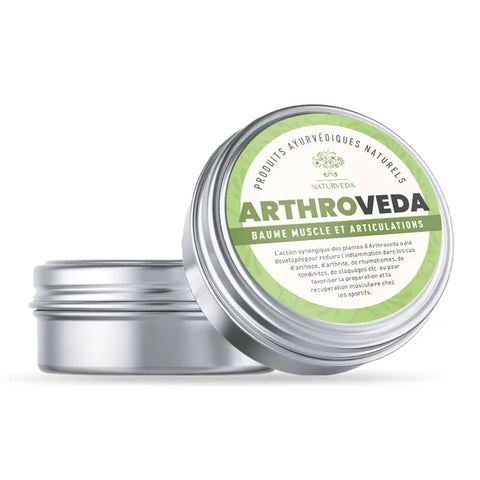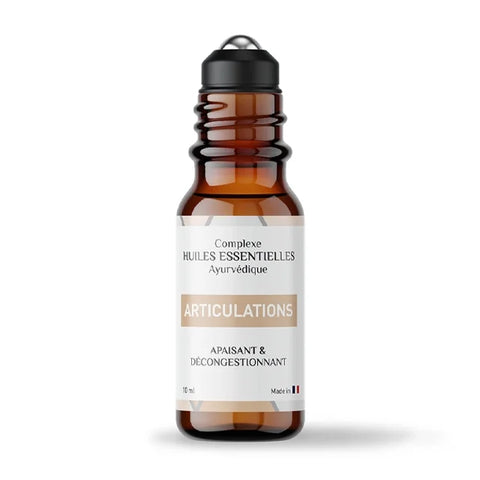7 products
Understanding Lower Back Pain or Lumbago: Causes, Relief and Medicinal and Homeopathic Treatments
Lower back pain, often called lumbago, is pain that is located in the lower back. It can come from a variety of causes, from muscle strains to disc problems. This pain is one of the most common health complaints.
Low back pain can be divided into two main categories: acute low back pain and chronic low back pain. Acute low back pain is usually short-term, lasting from a few days to a few weeks, and tends to resolve with rest, activity modifications, and over-the-counter medications. On the other hand, chronic low back pain typically lasts for more than three months and the cause may be more difficult to determine. It is important to understand that low back pain is often a symptom of another disease or condition. Therefore, it is essential to consult a healthcare professional for an accurate diagnosis to ensure proper treatment.
There are several main causes of lower back pain. Muscle strain is one of the most common causes. This can happen from sudden movement, heavy lifting, or improper posture. The intervertebral discs can also be the source of lower back pain. These discs can herniate or become less resilient with age, putting pressure on the surrounding nerves and causing severe pain.
Medical conditions are also responsible for lower back pain. Osteoarthritis , a degenerative joint disease, can affect the small joints of the spine. Pregnancy can also cause lower back pain due to the increased weight of the baby putting extra pressure on the back. In some cases, certain infections or diseases such as kidney stones and bladder infections can also cause lower back pain.
It is worth noting that lower back pain is not always due to a physical condition. Stress and anxiety can cause muscle tension in the back and thus lead to lower back pain. This is why it is important to consider all aspects of your life when trying to understand the cause of your lower back pain.
Relieving Lower Back Pain: Practical Tips
Fortunately, there are several ways to relieve lower back pain. The first step is to adopt correct posture and be aware of how you move, lift objects, and perform daily activities. Additionally, regular stretching and strengthening exercises can help strengthen your back muscles and prevent future back problems.
In case of persistent pain, you can resort to medicinal and homeopathic treatments. Over-the-counter painkillers such as paracetamol, ibuprofen can ease the pain. Sometimes, doctors prescribe antispasmodics or muscle relaxants for severe lower back pain. Also, homeopathic therapies can be effective in managing lower back pain. However, it is crucial to consult a healthcare professional before starting any treatment.
On the other hand, there are physical activities that can help alleviate lower back pain. Regularly practicing strengthening exercises, including pelvic floor exercises and back stretches to improve mobility, can go a long way in relieving back pain . Yoga and Pilates are also good options because they help strengthen the back muscles, improve flexibility, and promote relaxation. In addition, the deep breathing methods used in these disciplines can also help you manage pain. Finally, don't forget the importance of good posture. Avoid sitting for long periods of time, make sure your workstation is ergonomic, and do small mobility exercises throughout the day. All of this will help relieve muscle and joint pain and prevent the future onset of lower back pain.
In summary, there are a multitude of treatments and activities to help relieve lower back pain. It is important to consult a healthcare professional to find the best treatment plan for you. And remember, consistency is key, so find something you enjoy doing and stick with it.
Low Back Pain and the Importance of Restful Sleep
The connection between low back pain and restful sleep is quite significant. When you have low back pain, your sleep is often disrupted. After all, it’s hard to sleep peacefully when you’re experiencing severe lower back pain. And quality sleep is crucial for healing and pain management.
Think of sleep as fuel for your body. While you sleep, your body works hard to repair and restore various functions in your body, including the muscles and tissues in your back. If you don’t get enough sleep or if your sleep is disrupted, these repair and recovery processes are hampered, which can worsen joint and muscle pain .
So paying attention to the quality of your sleep is essential if you want to effectively manage your back problems. This could include adopting good sleep habits like establishing a regular bedtime routine, avoiding caffeine and electronics before bed, and investing in a supportive mattress and pillow.
All in all, never underestimate the power of restful sleep when it comes to combating lower back pain. It can play a pivotal role in your path to relief and recovery.
Diet, an Ally against Lower Back Pain?
In fact, there is a strong link between what you consume and your overall health, including the health of your back. A balanced diet rich in key nutrients can help reduce inflammation, strengthen muscles, support spinal discs, and maintain ideal body weight, which translates to less pressure on the spine.
For example, antioxidant-rich vegetables and fruits can help fight inflammation, a common cause of lower back pain. High-quality protein sources, such as fish, poultry, and nuts, provide the amino acids needed to repair and strengthen back muscles. Additionally, getting enough calcium and vitamin D supports bone health, which is essential for preventing lower back pain.
It should be noted, however, that although essential, a balanced diet cannot replace appropriate treatment in the event of chronic or severe lower back pain. However, in parallel with appropriate drug or homeopathic treatment , a good diet can be a valuable ally in combating lower back pain.
Medicinal Treatments for Low Back Pain: An Overview
When it comes to medical treatments for lower back pain, there are several options available to help relieve your discomfort. Nonsteroidal anti-inflammatory drugs (NSAIDs) are often recommended initially to reduce inflammation and pain in the lower back. Stronger medications such as oral steroids, muscle relaxants, antidepressants, or anticonvulsants may also be used if your pain is particularly severe or persistent.
Corticosteroid injections are another option to consider if you can't relieve your lower back pain with oral medications. These injections can reduce inflammation around the nerve root and provide pain relief for several months. However, their effectiveness varies among individuals, and they carry risks, including infection and damage to the intervertebral discs and adjacent joints.
As a last resort, if conservative treatments have failed to relieve your lower back pain, surgery may be considered. Surgical procedures, such as a discectomy, laminectomy, or spinal fusion, can help relieve pain by targeting the specific cause of your lower back pain. However, it is important to discuss all of the potential benefits and risks of surgery with your doctor before making a final decision.
It is important to emphasize that every individual is different, and what works best for one may not work for another. Therefore, it is crucial to work closely with your healthcare professional to determine the best treatment plan for your lower back pain.
Natural Remedies for Lower Back Pain: A Natural Alternative
Lower back pain can be effectively alleviated by natural remedies. If you opt for this solution, here are four proven remedies:
1. Rhus Toxicodendron : This remedy is often recommended when pain seems to improve with movement. It is especially helpful for pain that is worse with rest but lessens with physical activity.
2. Bryonia Alba : Unlike Rhus Toxicodendron, Bryonia Alba is most effective when the pain intensifies with movement and improves with rest. It is a perfect remedy for those suffering from acute lower back pain.
3. Arnica Montana : This remedy is used for pain that feels like a bruise or has been caused by trauma. Arnica Montana helps reduce inflammation and pain.
4. Sports Performance : This remedy is a supplement for those looking to alleviate their lower back pain. This product is made up of natural ingredients and herbs that promote muscle relaxation and reduction of inflammation.
Prevention of Lower Back Pain: Adopt the Right Actions
It can be quite difficult to completely prevent lower back pain especially if it is caused by chronic underlying health conditions. However, there are several steps you can take to reduce your risk of developing lower back pain.
First, a regular exercise program that focuses on strengthening your back and core can help support your spine. Additionally, be sure to maintain proper posture when sitting or standing, and avoid lifting heavy objects incorrectly. If you must lift something heavy, be sure to bend your knees and keep your back straight, using your legs to do the lifting rather than your back.
Maintaining a healthy weight is also important to prevent lower back pain. Excess weight can put extra strain on your back, which can lead to pain. Eating a healthy, balanced diet combined with regular physical activity can help maintain a healthy weight.
Finally, don't forget the importance of good sleep. Make sure you sleep on a supportive mattress and pillow that maintains good posture while sleeping. Avoid sleeping on your stomach, which can cause strain on your back.
Remember that prevention is often the best defense against lower back pain. Making these preventative measures a regular part of your routine can help keep your back healthy and reduce your risk of developing lower back pain.











